PILEUS SHAPE

CONICAL: these four pictures present pilei with a nearly conical shape. The first three, Mycena sp., Phaeocollybia christinae and Entoloma quadratum, fit this description comfortably, having a pointed apex and straight margin, but the last, Cortinarius acutus has a more rounded apex and an incurved margin and could be described as convex but with a large umbo, giving it a more conical shape. Cortinarius acutus is also notable for its conspicuously striate margin, a characteristic discussed more fully in the section on the pileus margin
.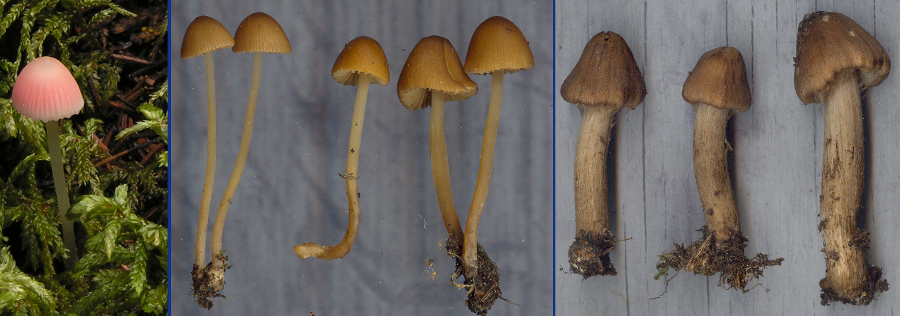
CONIC-CONVEX: these three pilei of Mycena amabilissima, Conocybe sp. and Inocybe subcarpta all show a conical shape with a typical straight margin, but the apex is clearly rounded rather than pointed. Such pilei are often described as conic-convex.
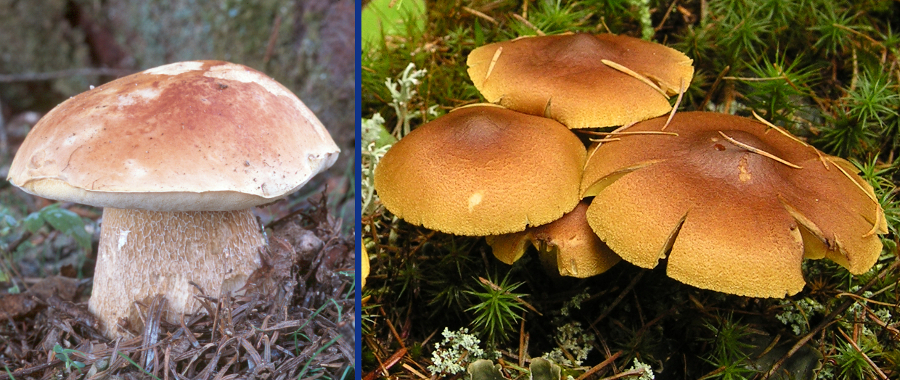
CONVEX: Boletus edulis and Cortinarius cinnamomeus both have nicely rounded convex pilei. In the case of B. edulis the pileus is evenly rounded without any interruption of its curve other than the evidence of slug grazing, while C. cinnamomeus clearly has a low, broad umbo.
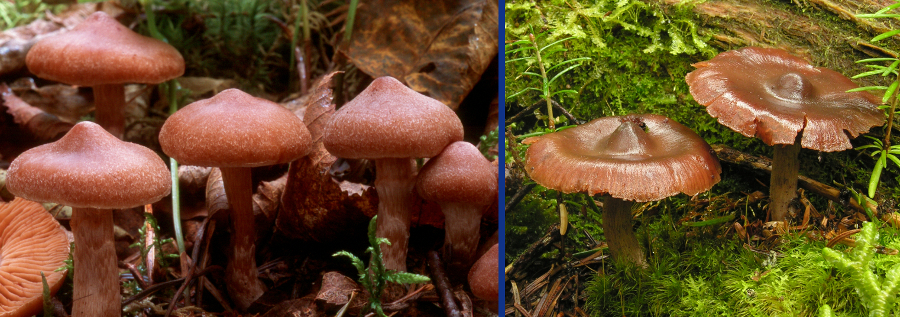
CONVEX AND WITH A PROMINENT UMBO: the two species of Cortinarius, C. flexipes and C. sp., shown here both have a broadly convex pileus with a conspicuous umbo. The umbo in C. flexipes is rounded at its apex, while that of C. sp. is quite sharp. Note also that the pileus of C. sp. is sunken in the middle, a condition described as "depressed", in this case rather broadly depressed.
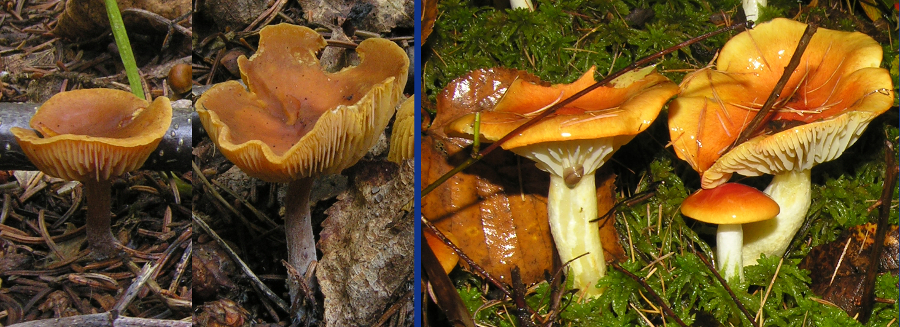
CONVEX AND BROADLY DEPRESSED: these two mushrooms, Calocybe fallax and Hygrophorus speciosus, both start out with convex pilei, as can be seen in the young cap of H. speciosus in the picture. Later the edge of the pileus begins to turn upward, eventually coming to resemble a cup.
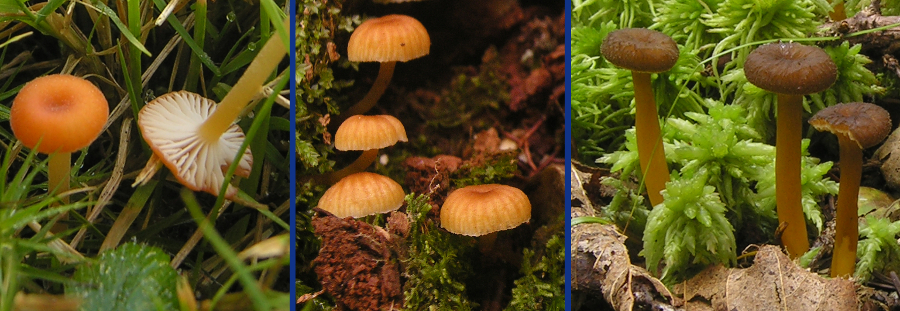
CONVEX AND UMBILICATE: the three species shown here, Rickenella fibula, Xeromphalina campanella and Craterellus tubaeformis, all have a small convex pileus with a small depression or "umbilicus" above the stipe. In C. tubaeformis the umbilicus my penetrate right down into the hollow stipe. In this species the pileus also may become more broadly depressed and goblet-like.
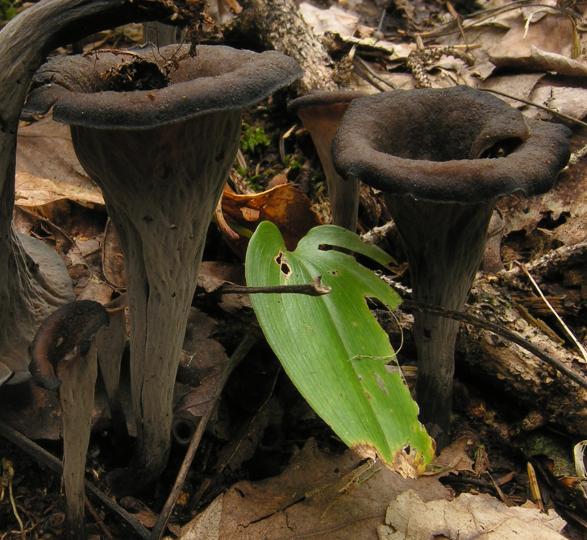
INFUNDIBULIFORM: Craterellus conucopioides, differs from most other mushrooms in having a funnel-shaped or "infundibuliform" pileus. In fact, this species is so different overall that it is difficult to say whether being infundibuliform is a characteristic of the pileus or of the whole fruiting body. In essence, the whole thing only has an inside and an outside. The basidia and basidiospores are produced on the wrinkled outer surface of the pileus and stipe.